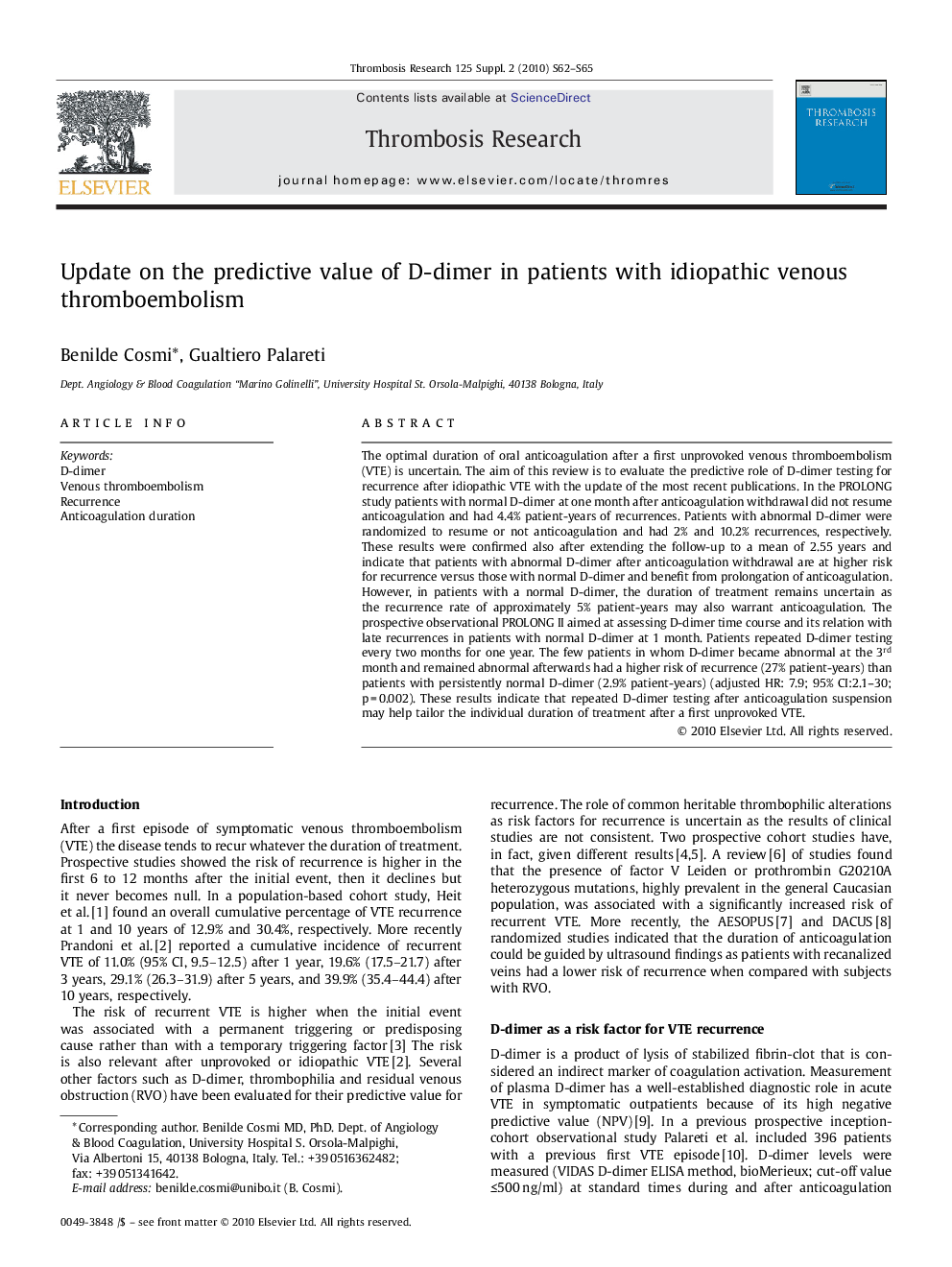| Article ID | Journal | Published Year | Pages | File Type |
|---|---|---|---|---|
| 3027968 | Thrombosis Research | 2010 | 4 Pages |
The optimal duration of oral anticoagulation after a first unprovoked venous thromboembolism (VTE) is uncertain. The aim of this review is to evaluate the predictive role of D-dimer testing for recurrence after idiopathic VTE with the update of the most recent publications. In the PROLONG study patients with normal D-dimer at one month after anticoagulation withdrawal did not resume anticoagulation and had 4.4% patient-years of recurrences. Patients with abnormal D-dimer were randomized to resume or not anticoagulation and had 2% and 10.2% recurrences, respectively. These results were confirmed also after extending the follow-up to a mean of 2.55 years and indicate that patients with abnormal D-dimer after anticoagulation withdrawal are at higher risk for recurrence versus those with normal D-dimer and benefit from prolongation of anticoagulation. However, in patients with a normal D-dimer, the duration of treatment remains uncertain as the recurrence rate of approximately 5% patient-years may also warrant anticoagulation. The prospective observational PROLONG II aimed at assessing D-dimer time course and its relation with late recurrences in patients with normal D-dimer at 1 month. Patients repeated D-dimer testing every two months for one year. The few patients in whom D-dimer became abnormal at the 3rd month and remained abnormal afterwards had a higher risk of recurrence (27% patient-years) than patients with persistently normal D-dimer (2.9% patient-years) (adjusted HR: 7.9; 95% CI:2.1–30; p = 0.002). These results indicate that repeated D-dimer testing after anticoagulation suspension may help tailor the individual duration of treatment after a first unprovoked VTE.
